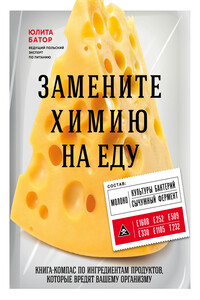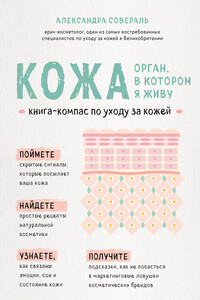264 St-Onge, M. P. et al., Medium-chain triglycerides. Obes Rev 11 (3): 395 – 402, 2003.
265 Mercola, Fat for fuel.
266 Vitaglione, P. et al., Healthy virgin olive oil: a matter of bitterness. Critical Reviews in Food Science and Nutrition 55: 1808 – 1818, 2015.
267 Notarnicola, M. et al., Effects of olive oil polyphenols on fatty acid synthase gene expression and activity in human colorectal cancer cells. Genes&Nutrition 6 (1): 63 – 69, 2011.
268 Khanfar, M. A. et al., Olive Oil-derived Oleocanthal as Potent Inhibitor of Mammalian Target of Rapamycin: Biological Evaluation and Molecular Modeling Studies. Phytother Res. 29 (11): 1776 – 82, 2015.
269 Rigacci, S. et al., Oleuropein aglycone induces autophagy via the AMPK/mTOR signalling pathway: a mechanistic insight, Oncotarget 6: 35344 – 35357, 2015.
270 Rhamani, A. H. et al., Therapeutics role of olive fruits/oil in the prevention of diseases via modulation of anti-oxidant, anti-tumour and genetic activity. Intern J of Clinical and Experimental Medicine 7 (4): 799 – 808, 2014.
271 Garcia-Martinez, O. et al., Phenolic compounds in Extra Virgin Olive Oil stimulate human osteoblastic cell proliferation. PLoS One 11 (3): e0150045, 2016.
272 «Milde ist meistens ein Zeichen von Ranzigkeit», Süddeutsche Zeitung Magazin, 31. Mai 2018. Siehe https://www.sueddeutsche.de/stil/olivenoel-milde-ist-meistens-ein-zeichen-von-ranzigkeit-1.3994817?reduced=true. Abgerufen Juli 2018.
273 Luetjohann, S., Das Schwarzkümmelheilbuch. Die bewährtesten Heilanwendungen, Gesundheitstipps und Rezepte, Oberstdorf: Windpferdverlag 2012.
274 Bao, Y. et al., Association of nut consumption with total and cause-specific mortality. N Engl J Med 369 (21): 2001 – 2011, 2013; Luu, H. N. et al., Prospective evaluation of the association of nut/peanut consumption with total and cause-specific mortality. JAMA Intern Med 175 (5): 755 – 766, 2015; Fernández-Montero, A. et al., Nut consumption and 5-y all-cause mortality in a Mediterranean cohort: the SUN project. Nutrition 30 (9): 1022 – 1027, 2014.
275 Fraser, G. E./Shavlik, D. J., Ten years of life: Is it a matter of choice? Arch Intern Med 161 (13): 1645 – 1652, 2001.
276 Lim, S. S. et al., A comparative risk assessment of burden of disease and injury attributable to 67 risk factors and risk factor clusters in 21 regions, 1990 – 2010: a systematic analysis for the Global Burden of Disease Study 2010. Lancet 380 (9859): 2224 – 2260, 2012.
277 Hu, F. B. et al., Frequent nut consumption and risk of coronary heart disease in women: prospective cohort study. BMJ 317: 1341 – 1345, 1998. Prineas, R. J. et al., Walnuts and serum lipids. N Engl J Med 329: 359, 1993.
278 De La Cruz et al., Lipid peroxidation and glutathione system: influence of olive oil administration. Biochem Biophysis Acta 1485: 36 – 44, 2000.
279 Sabate, J. et al., Effects of walnuts on serum lipid levels and blood pressure in normal men. N Engl J Med 328: 603 – 607, 1993; Abbey, M. et al., Partial replacement of saturated fatty acids with almonds and walnuts lowers total plasma cholesterol and LDL. Am J Clin Nutr 59: 995 – 999, 1994; Iwamoto, M. et al., Walnuts lower serum cholesterol in Japanese men and women. J Nutr 130 (9): 171 – 176, 2000; Almario, R. U. et al., Effects of walnut consumption on plasma fatty acids and lipoproteins in combined hyperlipidemia. Am J Clin Nutr 74 (1): 72 – 79, 2001.
280 Ros, E. et al., Fatty acid composition of nuts. Implications for cardiovascular health. Br J Nutr 96 (2): 29 – 35, 2006.
281 US. Department of Agriculture, Database for the Oxygen Radical Absorbance Capacity (ORAC) of Selected Foods. http://www.orac-info-portal.de/download/ORAC_R2.pdf. Abgerufen Juli 2018.
282 Ramón et al., Primary Prevention of Cardiovasculare Disease with a Mediterranean Diet – for the PREDIMED Study. N Engl J Med: 368:1279 – 1290. 2013.
283 Braunschweig, Pflanzenöle.
284 Morgan, W. A./Clayshulte, B. J., Pecans lower low-density lipoprotein cholesterol in people with normal lipid levels. J of American Dietetic Association 100 (3): 312 – 318, 2000.







